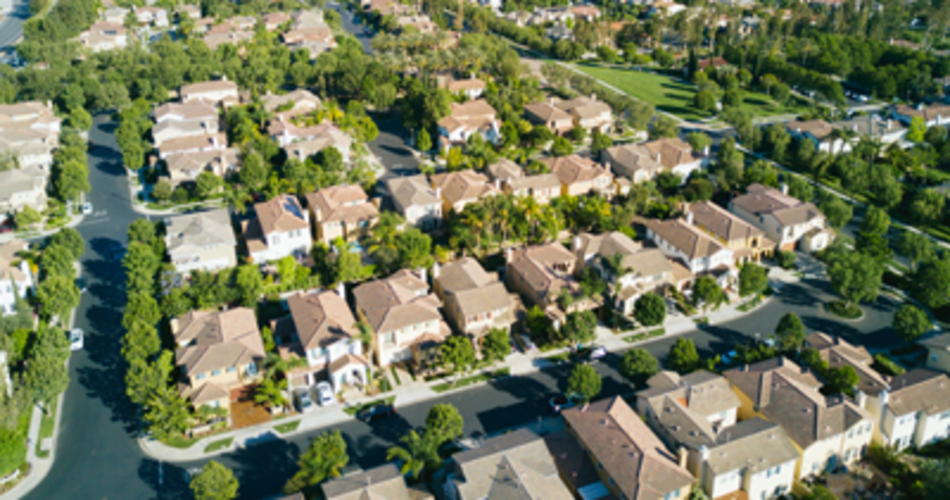 You’ve been there before: You popped into a store and wanted to look something up on your smartphone while waiting in line. However, the cell signal shows just one lousy bar. You consider logging on to Wi-Fi but there are multiple inconvenient steps that aren’t worth the hassle while you’re waiting in line. Nope, you’ll just wait to go back outside and go somewhere else next time.
Why can’t Wi-Fi be as simple as pulling the phone out of your pocket, like cellular? Or, better yet, why can’t cellular just be everywhere Wi-Fi is, including deep inside buildings? The answer lies in a little-known fact about cellular: Your phone company owns the right to use the cellular airwaves everywhere, even if, as in the example above, it’s not actually using them where you happen to be.
You may think that the store, realizing that you may never come back, would be willing to spend a little cash for better cell service, but it can’t. The store doesn’t own the right to use the airwaves inside its walls, thus it must work with each phone company individually to convince them to install a new tower nearby or some newfangled piece of equipment within the premises. The process takes months, and only if the phone company also sees a benefit to its own bottom line. There’s got to be a better way.
Folks who regulate airwaves are becoming aware of this problem and are coming up with radical new solutions. One scheme, known as coordinated shared spectrum (CSS), allows others to use the airwaves at a particular time in a particular location if the primary owner—typically, the phone company—is not. In 2015, the U.S. Federal Communications Commission (FCC) issued a new set of rules for the 3.5 GHz cellular band, turning it from an exclusive licensed band to a shared licensed band using a CSS scheme. FCC officials call it the “innovation band,” but its formal name is Citizen’s Broadband Radio Service (CBRS).
What makes CBRS interesting is that it enables building owners to install miniature, Wi-Fi-like boxes that use the same airwaves and the same technology as your cell phone. This means that your phone will work indoors exactly like it does outdoors, moving in and out of cell coverage without manually looking for open networks or entering passwords. Voice calls ring and SMS texts reach you, just like on the phone company network, and without them spending a dime to make it happen.
In the next few years, this service will become available so that the next time you visit that store (or hotel, sports venue, etc.) you will have great cellular service without any effort.
You’ve been there before: You popped into a store and wanted to look something up on your smartphone while waiting in line. However, the cell signal shows just one lousy bar. You consider logging on to Wi-Fi but there are multiple inconvenient steps that aren’t worth the hassle while you’re waiting in line. Nope, you’ll just wait to go back outside and go somewhere else next time.
Why can’t Wi-Fi be as simple as pulling the phone out of your pocket, like cellular? Or, better yet, why can’t cellular just be everywhere Wi-Fi is, including deep inside buildings? The answer lies in a little-known fact about cellular: Your phone company owns the right to use the cellular airwaves everywhere, even if, as in the example above, it’s not actually using them where you happen to be.
You may think that the store, realizing that you may never come back, would be willing to spend a little cash for better cell service, but it can’t. The store doesn’t own the right to use the airwaves inside its walls, thus it must work with each phone company individually to convince them to install a new tower nearby or some newfangled piece of equipment within the premises. The process takes months, and only if the phone company also sees a benefit to its own bottom line. There’s got to be a better way.
Folks who regulate airwaves are becoming aware of this problem and are coming up with radical new solutions. One scheme, known as coordinated shared spectrum (CSS), allows others to use the airwaves at a particular time in a particular location if the primary owner—typically, the phone company—is not. In 2015, the U.S. Federal Communications Commission (FCC) issued a new set of rules for the 3.5 GHz cellular band, turning it from an exclusive licensed band to a shared licensed band using a CSS scheme. FCC officials call it the “innovation band,” but its formal name is Citizen’s Broadband Radio Service (CBRS).
What makes CBRS interesting is that it enables building owners to install miniature, Wi-Fi-like boxes that use the same airwaves and the same technology as your cell phone. This means that your phone will work indoors exactly like it does outdoors, moving in and out of cell coverage without manually looking for open networks or entering passwords. Voice calls ring and SMS texts reach you, just like on the phone company network, and without them spending a dime to make it happen.
In the next few years, this service will become available so that the next time you visit that store (or hotel, sports venue, etc.) you will have great cellular service without any effort.
How Shared Spectrum Can Improve In-Building Cellular
Coordinated shared spectrum (CSS), allows others to use the airwaves at a particular time in a particular location if the primary owner is not.
 You’ve been there before: You popped into a store and wanted to look something up on your smartphone while waiting in line. However, the cell signal shows just one lousy bar. You consider logging on to Wi-Fi but there are multiple inconvenient steps that aren’t worth the hassle while you’re waiting in line. Nope, you’ll just wait to go back outside and go somewhere else next time.
Why can’t Wi-Fi be as simple as pulling the phone out of your pocket, like cellular? Or, better yet, why can’t cellular just be everywhere Wi-Fi is, including deep inside buildings? The answer lies in a little-known fact about cellular: Your phone company owns the right to use the cellular airwaves everywhere, even if, as in the example above, it’s not actually using them where you happen to be.
You may think that the store, realizing that you may never come back, would be willing to spend a little cash for better cell service, but it can’t. The store doesn’t own the right to use the airwaves inside its walls, thus it must work with each phone company individually to convince them to install a new tower nearby or some newfangled piece of equipment within the premises. The process takes months, and only if the phone company also sees a benefit to its own bottom line. There’s got to be a better way.
Folks who regulate airwaves are becoming aware of this problem and are coming up with radical new solutions. One scheme, known as coordinated shared spectrum (CSS), allows others to use the airwaves at a particular time in a particular location if the primary owner—typically, the phone company—is not. In 2015, the U.S. Federal Communications Commission (FCC) issued a new set of rules for the 3.5 GHz cellular band, turning it from an exclusive licensed band to a shared licensed band using a CSS scheme. FCC officials call it the “innovation band,” but its formal name is Citizen’s Broadband Radio Service (CBRS).
What makes CBRS interesting is that it enables building owners to install miniature, Wi-Fi-like boxes that use the same airwaves and the same technology as your cell phone. This means that your phone will work indoors exactly like it does outdoors, moving in and out of cell coverage without manually looking for open networks or entering passwords. Voice calls ring and SMS texts reach you, just like on the phone company network, and without them spending a dime to make it happen.
In the next few years, this service will become available so that the next time you visit that store (or hotel, sports venue, etc.) you will have great cellular service without any effort.
You’ve been there before: You popped into a store and wanted to look something up on your smartphone while waiting in line. However, the cell signal shows just one lousy bar. You consider logging on to Wi-Fi but there are multiple inconvenient steps that aren’t worth the hassle while you’re waiting in line. Nope, you’ll just wait to go back outside and go somewhere else next time.
Why can’t Wi-Fi be as simple as pulling the phone out of your pocket, like cellular? Or, better yet, why can’t cellular just be everywhere Wi-Fi is, including deep inside buildings? The answer lies in a little-known fact about cellular: Your phone company owns the right to use the cellular airwaves everywhere, even if, as in the example above, it’s not actually using them where you happen to be.
You may think that the store, realizing that you may never come back, would be willing to spend a little cash for better cell service, but it can’t. The store doesn’t own the right to use the airwaves inside its walls, thus it must work with each phone company individually to convince them to install a new tower nearby or some newfangled piece of equipment within the premises. The process takes months, and only if the phone company also sees a benefit to its own bottom line. There’s got to be a better way.
Folks who regulate airwaves are becoming aware of this problem and are coming up with radical new solutions. One scheme, known as coordinated shared spectrum (CSS), allows others to use the airwaves at a particular time in a particular location if the primary owner—typically, the phone company—is not. In 2015, the U.S. Federal Communications Commission (FCC) issued a new set of rules for the 3.5 GHz cellular band, turning it from an exclusive licensed band to a shared licensed band using a CSS scheme. FCC officials call it the “innovation band,” but its formal name is Citizen’s Broadband Radio Service (CBRS).
What makes CBRS interesting is that it enables building owners to install miniature, Wi-Fi-like boxes that use the same airwaves and the same technology as your cell phone. This means that your phone will work indoors exactly like it does outdoors, moving in and out of cell coverage without manually looking for open networks or entering passwords. Voice calls ring and SMS texts reach you, just like on the phone company network, and without them spending a dime to make it happen.
In the next few years, this service will become available so that the next time you visit that store (or hotel, sports venue, etc.) you will have great cellular service without any effort.















